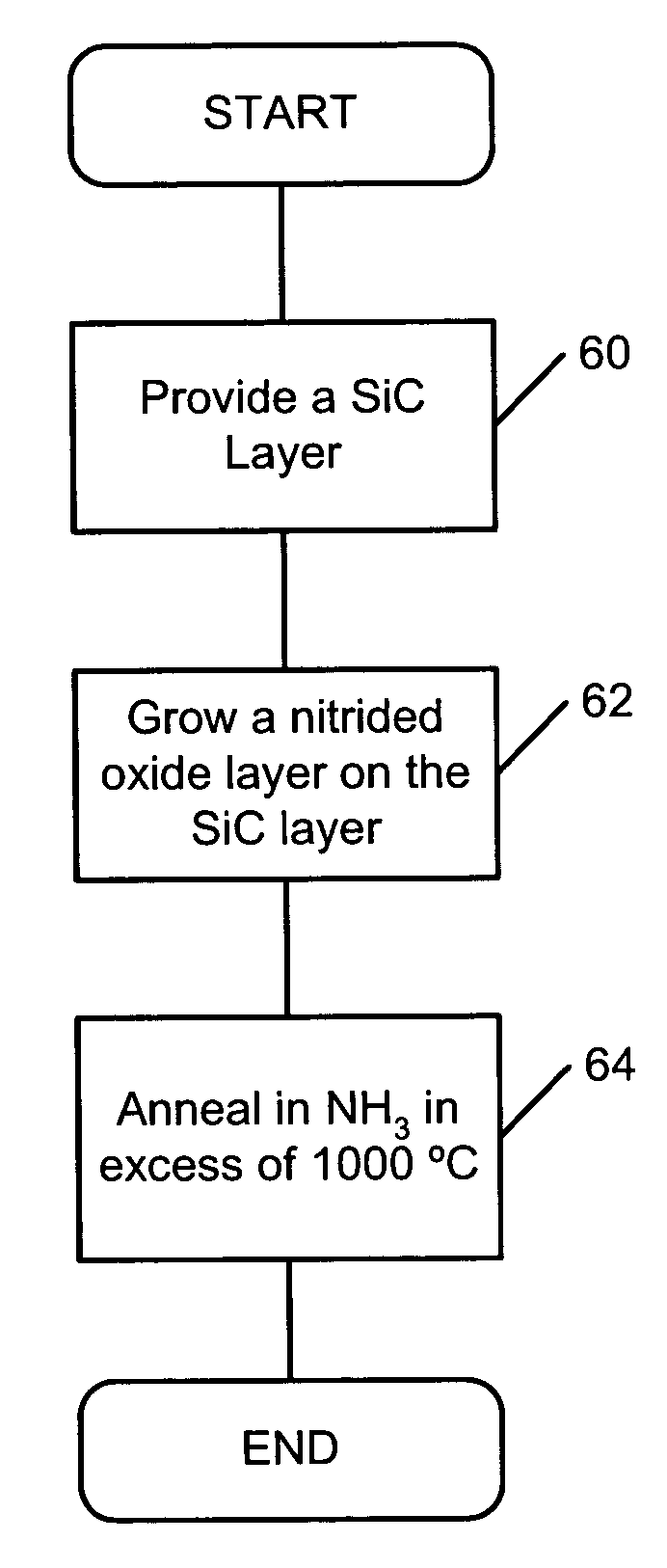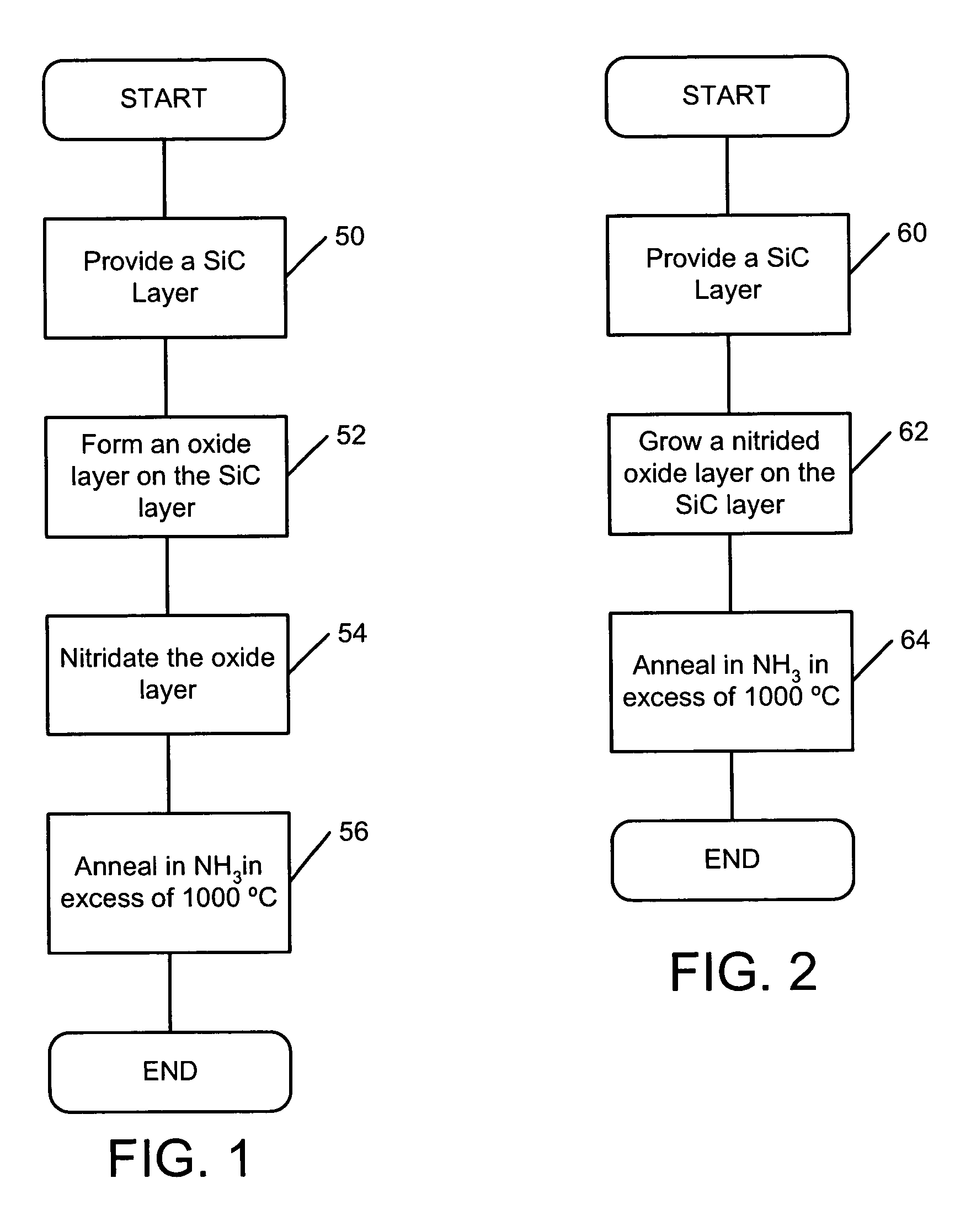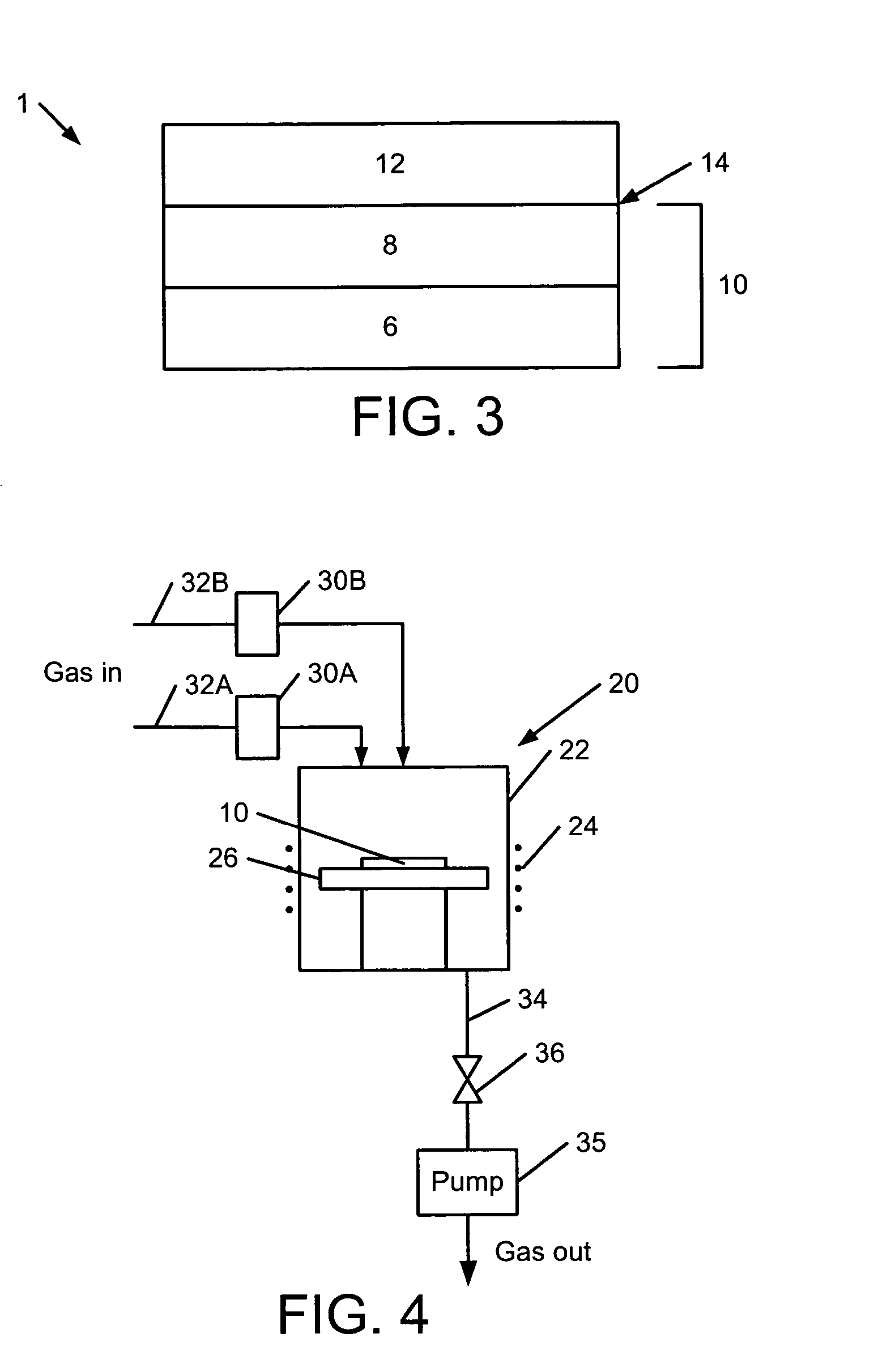Nitrogen passivation of interface states in SiO2/SiC structures
a technology of sio2/sic structure and interface state, which is applied in the direction of coatings, chemical vapor deposition coatings, semiconductor devices, etc., can solve the problems of reducing the performance of electronic devices that incorporate such interfaces, affecting the electrical functioning of devices, and affecting the electrical properties of electronic devices, etc., to reduce the breakdown field strength of oxide layers, and reduce the density of interface states
- Summary
- Abstract
- Description
- Claims
- Application Information
AI Technical Summary
Benefits of technology
Problems solved by technology
Method used
Image
Examples
examples
[0044]The following examples and experimental results shall be regarded as merely illustrative and shall not be construed as limiting the invention. In a first experiment, 450 Å thick layers of SiO2 were formed on 4H—SiC n-type wafers manufactured by Cree, Inc. by conventional dry oxidation techniques, including re-oxidation according to the process described in U.S. Pat. No. 5,972,801 issued Oct. 26, 1999 which is assigned to the assignee of the present invention and which is incorporated herein by reference as if fully set forth herein. The SiO2 / SiC interfaces were then nitrided according to the process described in U.S. patent application Ser. No. 09 / 834,283 filed Apr. 12, 2001 entitled “Method Of N2O Annealing An Oxide Layer On A Silicon Carbide Layer” referenced above. Specifically, the interface was annealed in a furnace tube at 1300° C. for 3 hours under an N2O flow rate of 4 SLM. Subsequently, the wafers were removed from the tube furnace.
[0045]NH3 annealing was performed in...
PUM
| Property | Measurement | Unit |
|---|---|---|
| pressure | aaaaa | aaaaa |
| temperature | aaaaa | aaaaa |
| temperature | aaaaa | aaaaa |
Abstract
Description
Claims
Application Information
 Login to View More
Login to View More - R&D
- Intellectual Property
- Life Sciences
- Materials
- Tech Scout
- Unparalleled Data Quality
- Higher Quality Content
- 60% Fewer Hallucinations
Browse by: Latest US Patents, China's latest patents, Technical Efficacy Thesaurus, Application Domain, Technology Topic, Popular Technical Reports.
© 2025 PatSnap. All rights reserved.Legal|Privacy policy|Modern Slavery Act Transparency Statement|Sitemap|About US| Contact US: help@patsnap.com



